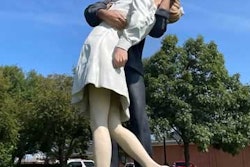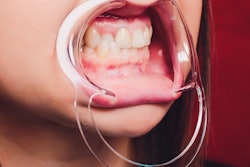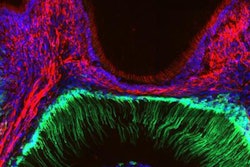
About 60% of maxillofacial surgeons joined the Nazi Party during the Third Reich, according to a study published in the April issue of the Journal of Cranio-Maxillofacial Surgery. More maxillofacial surgeons had ties to the National Socialist Party than other medical professionals.
Maxillofacial surgeons who were members of the National Socialist German Workers' Party (NSDAP) advanced their careers more frequently than nonmembers. They also experienced no professional setbacks after World War II ended in 1945, the authors wrote.
"Maxillofacial surgeons joined the NSDAP on a larger scale than the medical profession as a whole," wrote the authors, led by Lisa Bitterich of the Institute for the History, Theory, and Ethics of Medicine at the RWTH Aachen University in Germany (J Craniomaxillofac Surg, April 2021, Vol. 49:4, pp. 329-335).
Nazis in the medical field
To identify and classify maxillofacial surgeons from Germany and Austria, researchers used archives, including the NSDAP membership files in the Federal Archives in Berlin, to analyze each case. This was the first time these files were evaluated, the authors wrote.
University, federal, and state archives, as well as other sources, including directories of doctors and dentists, faculty journals, and biographical theses and dissertations, were reviewed. The authors conducted the research, which identified 187 German and Austrian specialist surgeons, between 2017 and 2020, according to the study.
With a membership rate of about 45%, the medical profession was the professional group with the highest proportion of Nazi Party members during the Third Reich by far. For comparison, the membership rate for teachers was about 25%.
Yet far more maxillofacial surgeons joined the Nazi Party than the medical profession as a whole. Of the 187 maxillofacial surgeons in the study, 62% were members of the Nazi Party by 1945, the authors wrote.
Of these specialists who were members, about 64% of surgeons advanced their careers during the Third Reich. Another 31% maintained their positions, and only 5% were dismissed from their positions or were forced into retirement by 1945.
"The NSDAP membership rate of maxillofacial surgeons was unexpectedly high," Bitterich and her colleague wrote.
Most of the members of the Nazi Party also did not suffer any career setbacks after 1945. By that year, 13 surgeons who were party members had retired, died, or their whereabouts were unknown. The remaining 103 surgeons were able to resume their careers in the postwar era, the authors wrote.
Career development wasn't as positive for maxillofacial surgeons who were not members of the Nazi Part. Only 17 of the 69 nonmembers made strides in their careers before 1945. Eight were demoted and the rest held their positions, the authors wrote.
Many more?
Maxillofacial surgeons likely were more inclined to join the party than other medical professions because Nazis emphasized that they played integral roles in treating injured soldiers and civilians. During this period in history, many specialized surgeons worked at university hospitals and being a member of the Nazi Party was very beneficial to those who wanted to maintain or advance their academic careers, they acknowledged.
The period of the Third Reich was subsequently a breakthrough period for maxillofacial surgeons. In 1935, a specialist qualification for maxillofacial surgery was introduced and the prerequisites for the job were a dual degree in dentistry and medicine. Many German and Austrian specialist surgeons, including Hans Pichler, an oral surgeon who assisted in treating Sigmund Freud's maxillary jaw cancer, rose to international prominence.
Nevertheless, reliable membership data for medical specialists, including maxillofacial surgeons, have been scarce through the period of the Third Reich. The authors noted that the true proportion of maxillofacial surgeons who were members of the Nazi Party is likely higher.




















